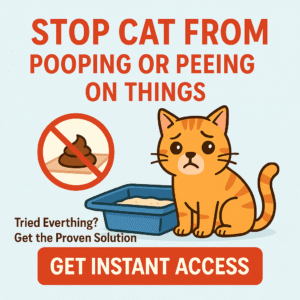Caring for a cat with no teeth—or even just a few left—is more common than you might think. Dental disease, genetics, or age can leave a feline friend “gummy,” but with the right feeding strategies and a thoughtfully chosen food bowl, your toothless cat can live a healthy, contented life. This guide explains what makes the best bowl for cats with no teeth, how to choose the right one, and tips for making every meal a joy.
Why Toothless Cats Need Special Bowls
Cats with no teeth face unique challenges at mealtime. While cats don’t chew as thoroughly as dogs, their teeth help them grasp, tear, and move food. Without them, eating can be messy, tiring, or even uncomfortable—especially if the wrong bowl is used. The best bowl for a toothless cat is:
- Wide and shallow, to let your cat scoop food easily without having to “bite” or chase it.
- Non-skid and stable, so it won’t slide away as your cat pushes food with their tongue and gums.
- Smooth, with no sharp edges or deep corners where food can get trapped.
- Made from safe, easy-clean materials (stainless steel, ceramic, or glass).
- Optional: Slightly elevated for more ergonomic eating, especially for seniors or cats with arthritis.
Best Types of Bowls for Cats with No Teeth
- Shallow, Wide Dishes: The go-to for toothless cats. These allow your cat to lap or “shovel” soft food with minimal effort. Avoid deep or narrow bowls that make food hard to reach.
- Raised/Elevated Bowls: Bowls elevated by 2-4 inches help cats eat more comfortably—especially useful for older cats or those with joint pain. Toothless cats benefit because gravity helps keep food in place and makes swallowing easier.
- Ceramic or Stainless Steel Bowls: Non-porous, easy to clean, and heavy enough not to move around.
- Non-Slip/Weighted Bowls: Look for rubberized bases or hefty bowls so your cat can’t push the dish around as they work to eat.
- Mat-Style Dishes: Flat or gently sloped feeding mats are great for serving pâté, mousse, or blended food—minimizing frustration and waste.
Top Product Picks for Toothless Cats (2025)
1. Dr. Catsby’s Whisker Relief Cat Bowl
- Wide, shallow stainless steel—perfect for lapping up soft food and gravy.
- Non-slip silicone base prevents movement.
- Easy to clean and dishwasher safe.
- Minimal rim—food stays accessible for cats who use their tongue instead of teeth.
- Cons: Not ideal for very messy eaters, as food may spill over edges.
2. Necoichi Raised Cat Food Bowl
- Lead- and cadmium-free ceramic, raised 4” for ergonomic eating.
- Wide, shallow bowl shape lets cats lap and scoop with ease.
- Stable and heavy—resists sliding or tipping.
- Dishwasher and microwave safe.
- Cons: Ceramic can break if dropped; higher price point than some bowls.
3. Van Ness Stainless Steel Shallow Cat Dish
- Low, wide, and affordable—designed for easy lapping.
- Non-skid bottom and dishwasher safe.
- Ideal for pâté, mousse, or blended wet food.
- Cons: Not raised; lightweight compared to ceramic or elevated bowls.
4. PetFusion Elevated Pet Bowl (with Stainless Steel Inserts)
- Raised by 2-4 inches for comfortable eating posture.
- Heavy, stable, and modern design.
- Stainless steel bowls are removable and easy to wash.
- Cons: Takes up more space than single bowls; elevated bowls are not ideal for all cats (consult your vet if your cat has severe swallowing problems).
5. Loving Pets Bella Roma Travel Bowl (for Travel/Feeding on the Go)
- Flexible, shallow silicone—easy to carry, pack, and clean.
- Works for soft foods and water; wide enough for easy access.
- Cons: Not non-slip; best for occasional use or travel.
Feeding Tips for Cats with No Teeth
- Stick to soft, wet foods—pâté, mousse, or blended canned foods are easiest to lap up.
- If feeding dry food, soften with warm water or broth to make a gruel.
- Feed smaller, more frequent meals—some toothless cats tire quickly while eating.
- Wipe your cat’s chin and face after meals to keep skin healthy (wet food can be messy).
- Always have fresh water nearby, ideally in a wide, shallow, non-tip bowl or a low fountain.
- Monitor for signs of difficulty: messy eating, frustration, weight loss, or leaving food behind. Adjust bowl style or food texture as needed.
Frequently Asked Questions
Can a cat eat dry food with no teeth?
Some toothless cats learn to “gum” softened kibble, but it’s easier and safer to feed soft, wet, or blended foods. Dry food should be soaked with water or broth until it’s mushy.
Should I use an elevated bowl for my toothless cat?
Many senior or toothless cats benefit from raised bowls, which make swallowing easier and reduce neck or joint strain. Start with a modest height (2–4 inches) and observe your cat’s comfort.
Are plastic bowls safe for toothless cats?
Plastic bowls are not recommended—scratches harbor bacteria, which can irritate sensitive gums. Stainless steel, ceramic, or glass are better choices.
How often should I clean my cat’s food bowl?
Wash after every meal, especially when serving wet or blended food. Use unscented dish soap and hot water; rinse thoroughly to avoid soap residue.
What if my toothless cat has trouble eating even with a shallow bowl?
Consult your veterinarian. There may be issues with tongue strength, oral pain, or other health concerns. A vet can help tailor a nutrition and feeding plan for your cat’s specific needs.
Final Thoughts: Happy Mealtimes for Every Cat
A toothless cat can still thrive and enjoy every meal with the right bowl and a little extra care. Choose a wide, shallow, stable dish in a safe material, and offer soft, easy-to-lap food for comfort and nutrition. With patience and observation, you’ll find the perfect routine—ensuring your beloved cat stays well-fed, content, and purring for years to come.
